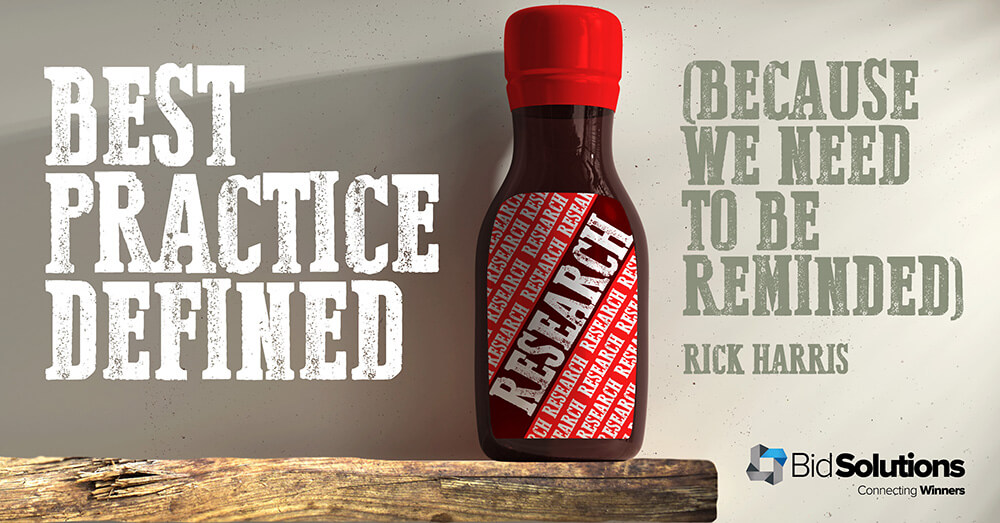
Translating Old English to Middle English to Modern English was a passion of mine at university. I majored in English Literature and could not get enough of learning where a word or how a phrase evolved into what we use today. My daughter calls me a “word nerd” and my son says mine is the most “uninteresting major in the history of modern education.”
That is not true. The discipline of translation can be applied to everyday life. One can trace a word right down to its root and phrases and watch them slowly evolve over time. By slowly, we’re talking about evolution over centuries.
Through my 34 years in association management, I have seen one phrase that changes meaning as often as the tide at the beach. The phrase is “Best Practice.”
Those two simple words apparently can shapeshift into a variety of meanings at the whim of its user.
According to the Merriam-Webster Dictionary, best practice is defined as “A procedure that has been shown by research and experience to produce optimal results and that is established or proposed as a standard suitable for widespread adoption.”
There are four key words we should hold ourselves accountable to in that definition. They are “procedure“ and “research and experience.” When talking about best practice, that’s all you really need to know. Procedure. Research and Experience. Full stop.
As an association executive serving the bid and proposal industry (and others before that), I have seen the phrase “Best Practice” misused in the most embarrassing ways. The most common form is in marketing copy. By attempting to sell a solution or a service, you will often see the phrase “Best Practice” pop up as reinforcement on why you should buy.
Too often, people toss the phrase “Best Practice” out to convince you it is standard operating procedure. Most of the time it is not. Some people routinely say that a process is best practice because their company prefers things done a certain way or, worst of all, it is their opinion.
If a best practice is missing the basic tenets (procedure, research and experience) it is not a best practice. Most of the time the phrase “Best Practice” is missing one key ingredient (screaming from the highest mountain): “RESEARCH”.
Without verifiable research to support the hypothesis of the process, it is simply an opinion. Without research, the claim is as weak as a watered-down cup of coffee. It has little to no meaning.
Associations like APMP know it must prove the process through research, usually through its own members, before calling it a best practice. For example, APMP’s Body of Knowledge was created and written though research. APMP’s family of certification was created and written through research. We research it, because we know that’s the only way standards and governing organisations like the British Standards Institute, American National Standards Institute, or certification governing bodies like the APM Group will accept it as a best practice or standard.
By research, we aren’t talking about a LinkedIn poll or a five-question survey. We are talking about a cross-section of users worldwide who have an opinion about a process and the way things are done, and exhaustive conversations and focus groups debating and getting to one true meaning. The research is usually conducted by a third party over a long period of time and is generally an expensive process.
One of the reasons associations exist is to publish verifiable, researched procedures for their members. Associations globally are proud of that but are seldom recognised for their rigor in determining best practice.
There is, however, an antidote to the misused phrase “Best Practice”. If you read, hear, or see it, simply ask the user about their research process. If the research does not exist, it’s an opinion. If the research is light or skimpy, it is still an opinion.
We ask those who misuse the phrase “Best Practice” to instead say “In my/our opinion, this should be the process…” That is far more accurate.
The secret sauce for any best practice is in the research.
This article was written by Rick Harris.
Rick has 32 years of association management experience, with the last ten years spent as the CEO of APMP. He is committed to the bid and proposal industry and has guided the association to a 100% growth in membership (now at 10,500+ members) over that time. With the help of APMP’s Board of Directors, Rick created Bid & Proposal Con Europe™ and Bid & Proposal Con Asia™ to promote professionalism in the bid and proposal industry worldwide. He is APMP Practitioner certified and encourages all bid and proposal professionals to join APMP.

